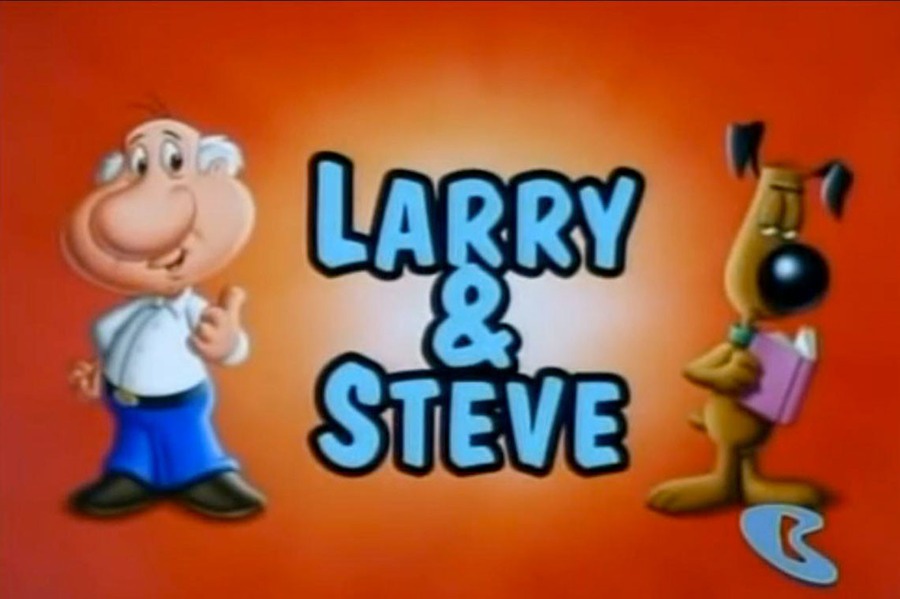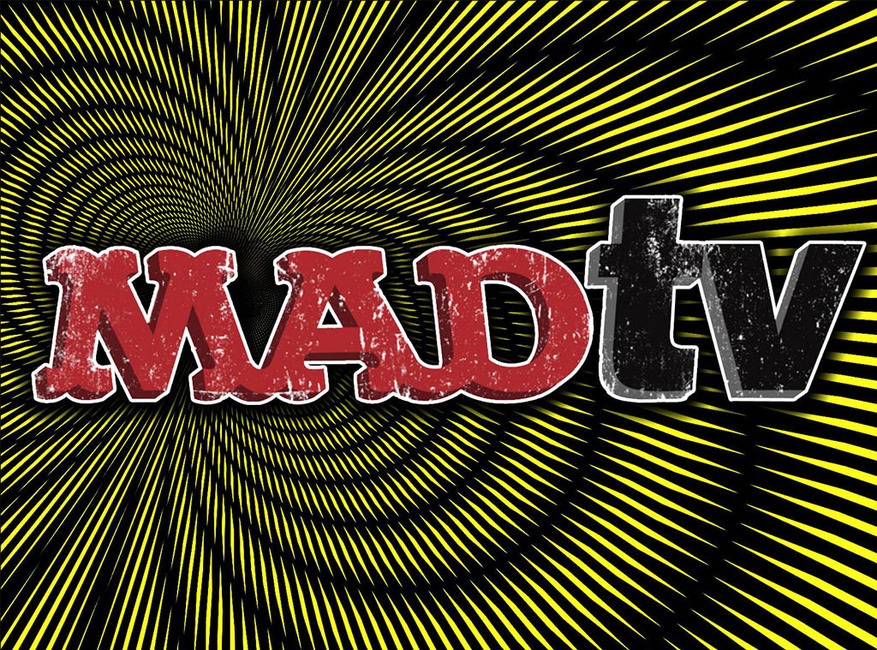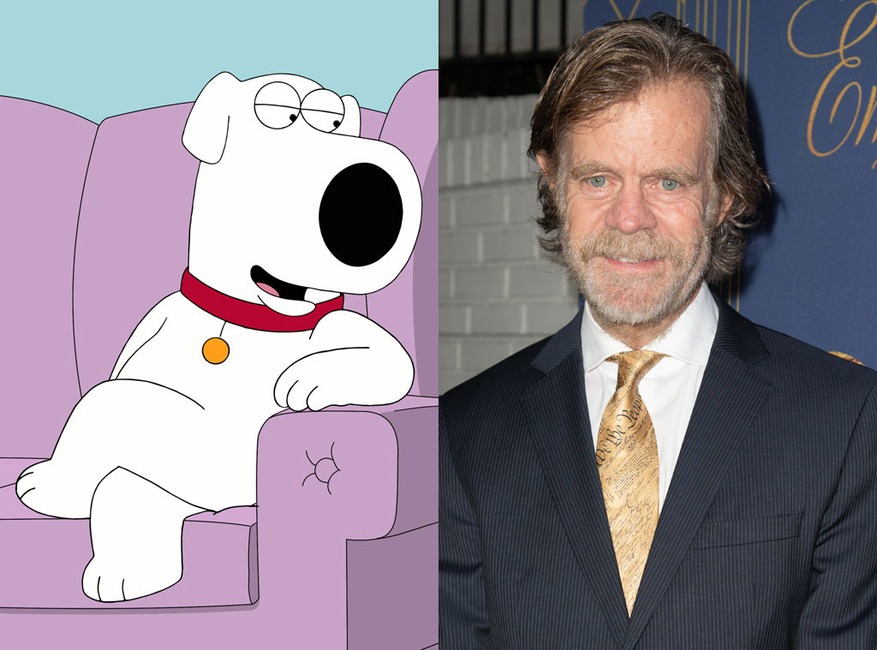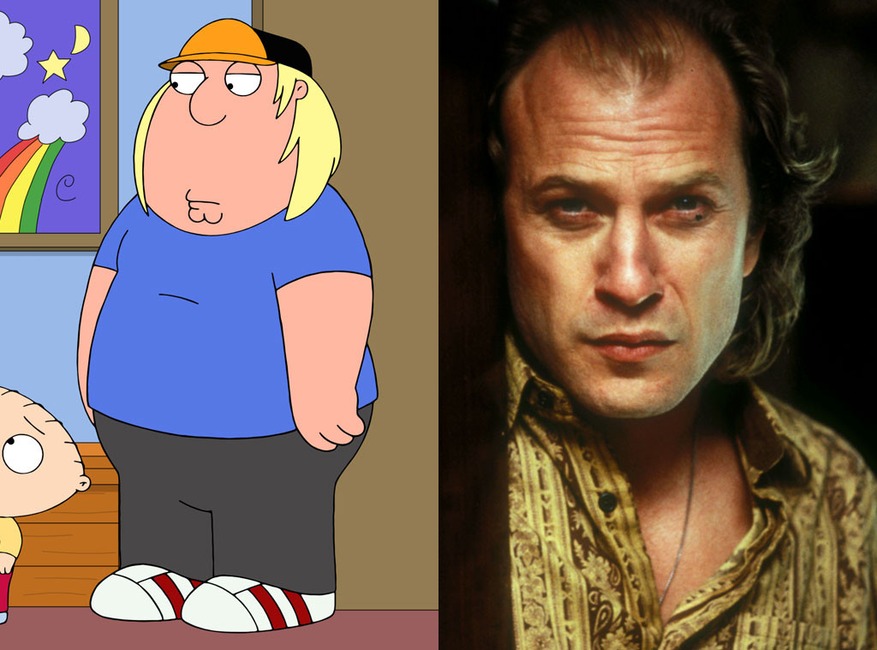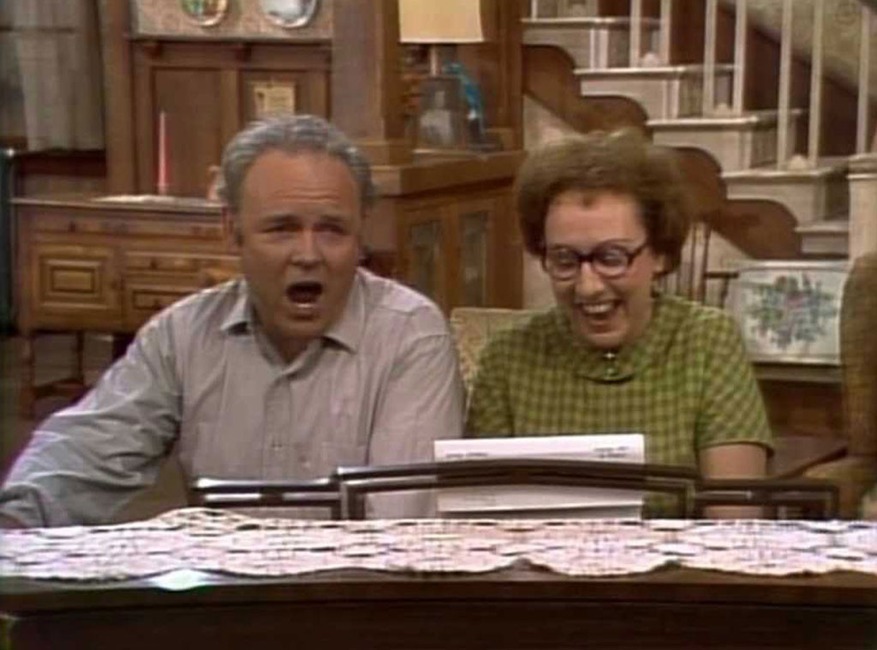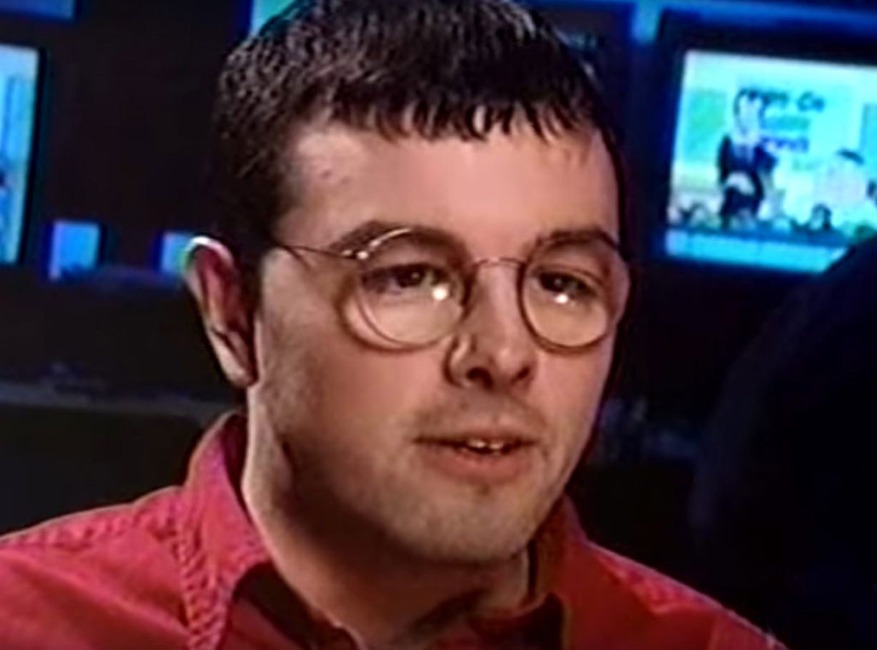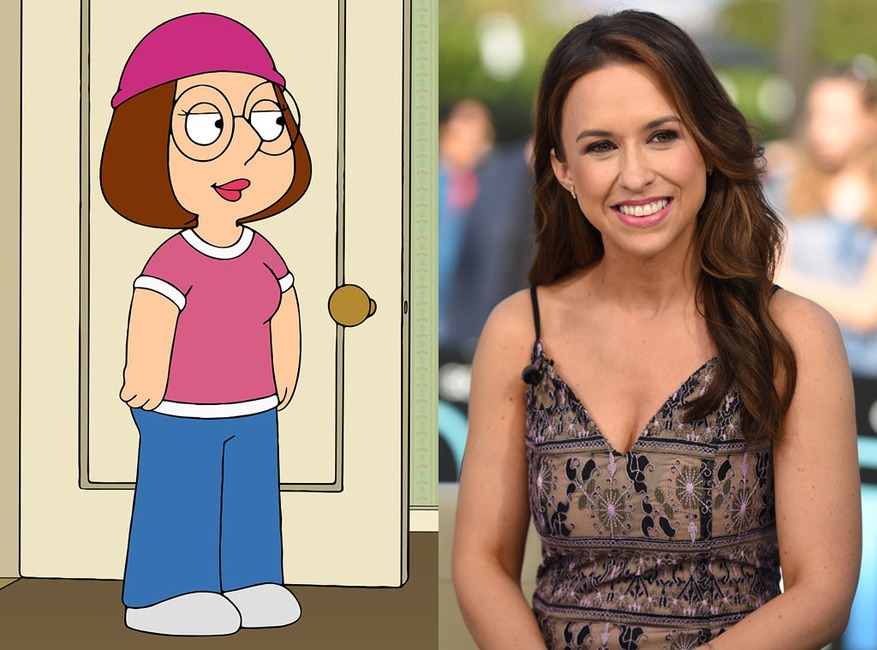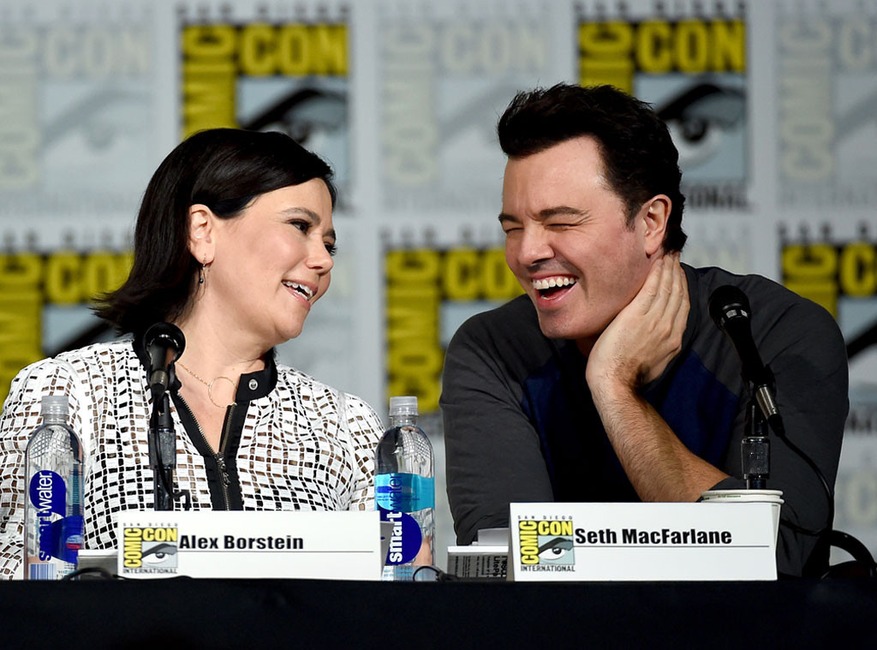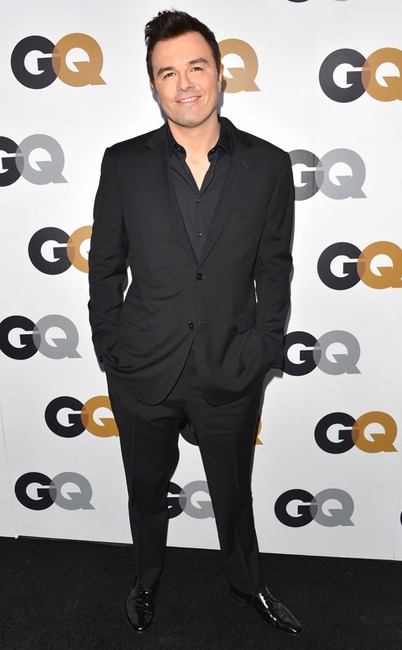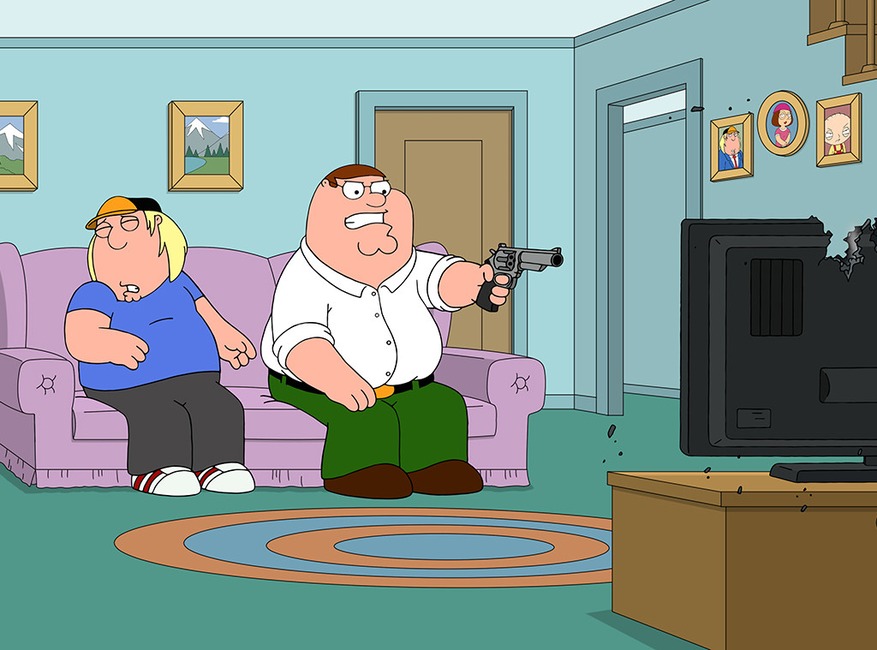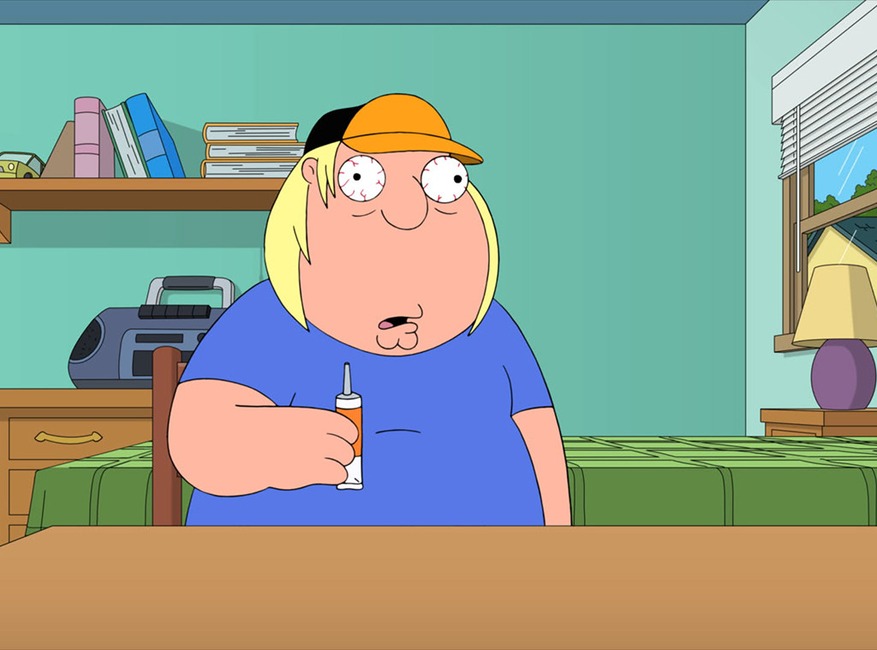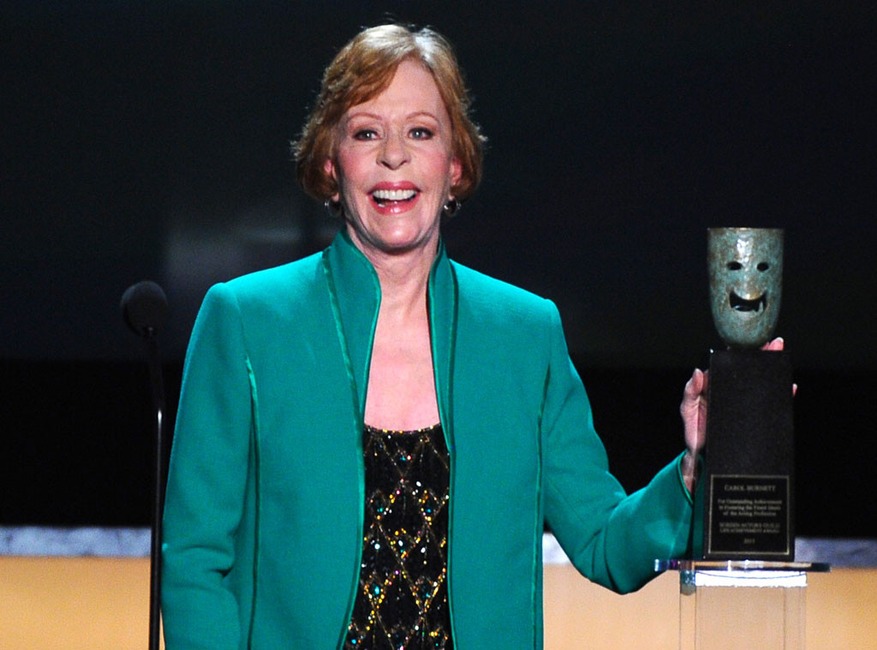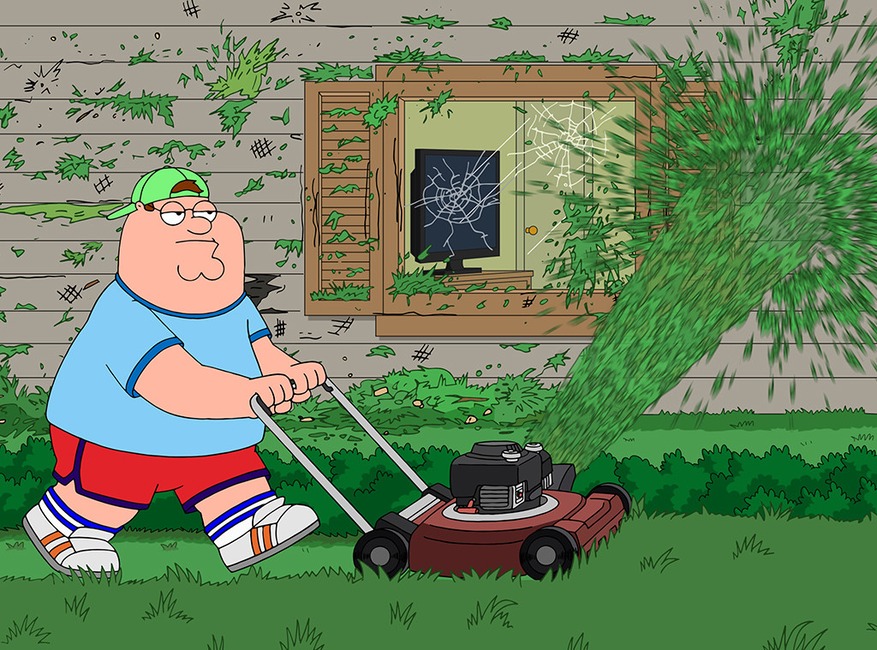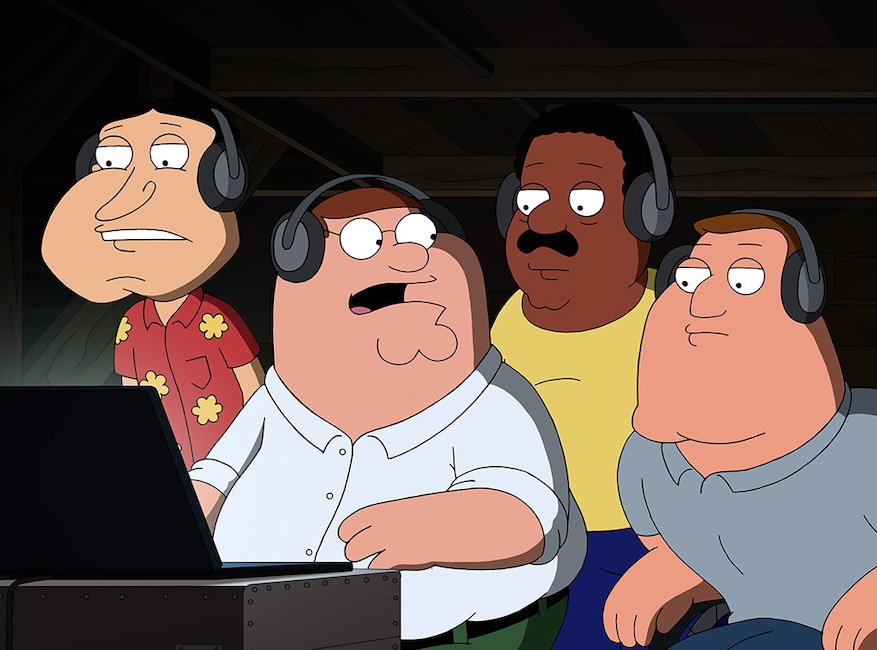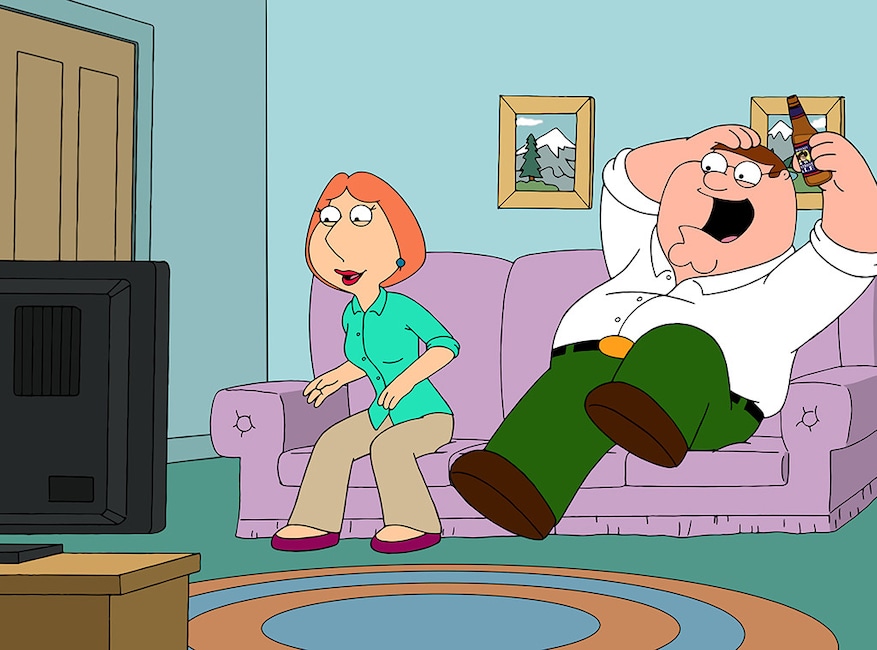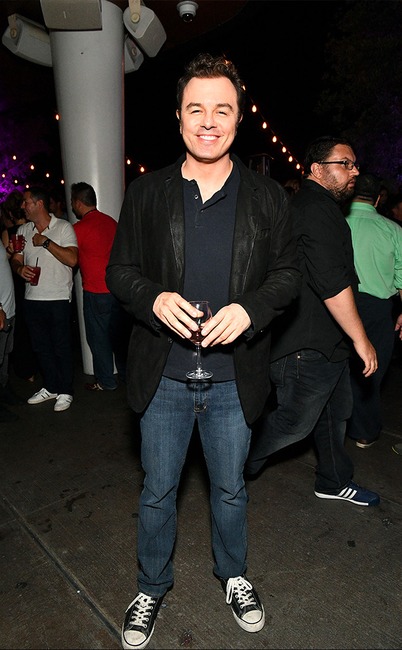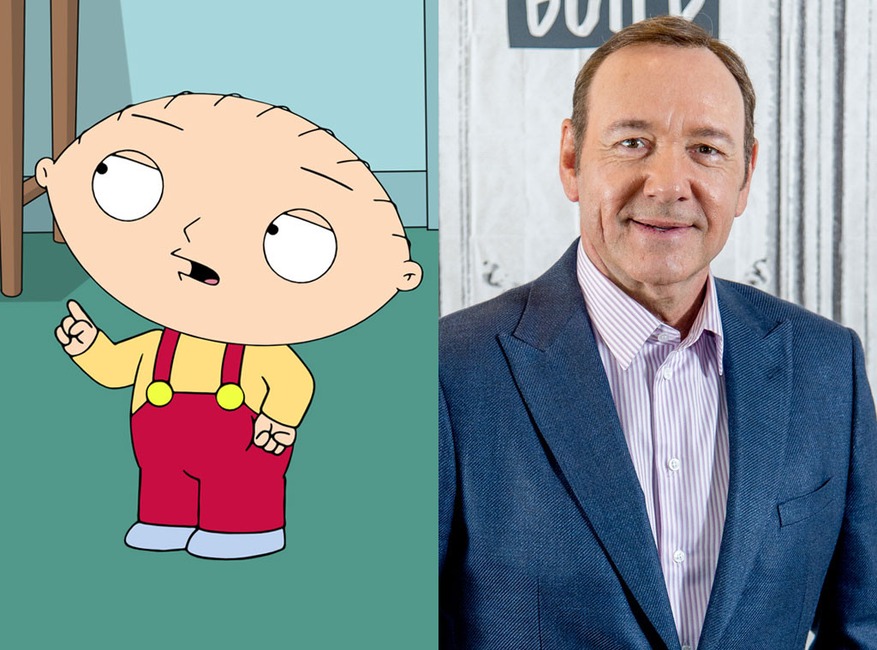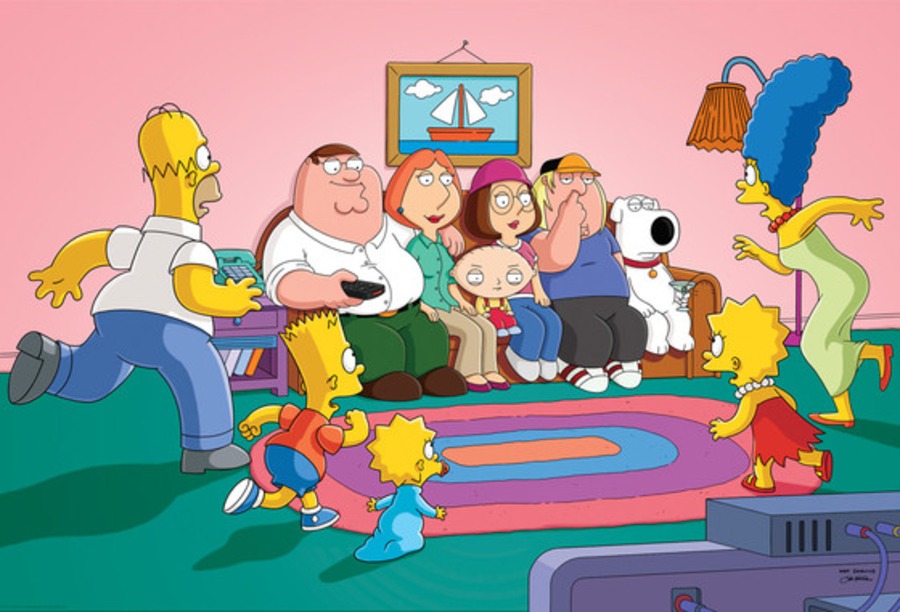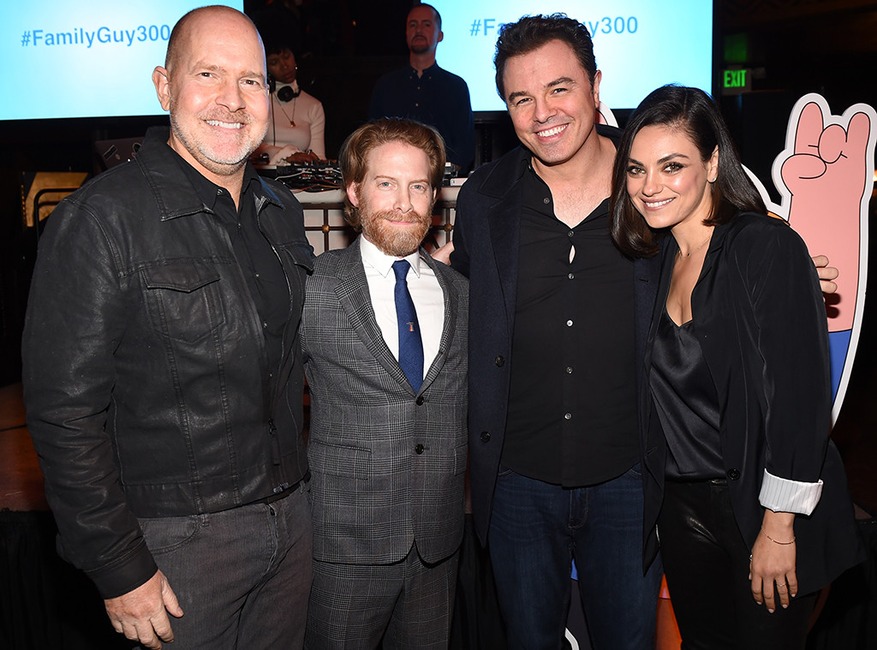Hard as it may seem, it’s been two decades since Fox first brought the animated world of Quahog, Rhode Island into our homes.
But it was 20 years ago that audiences sticking around on the network after Super Bowl XXXIII on January 31, 1999 were introduced to Family Guy, Seth MacFarlane‘s animated magnum opus, and the Griffin family whom the decidedly adult cartoon centers around. We met Peter Griffin, the bumbling father, Lois, his pretty wife, Meg, their oft-ridiculed daughter, Chris, their awkward teenage son, Stewie, their diabolical infant son intent on ruling the world, and Brian, their anthropomorphic dog.
With its heady mix of high-and low-brow comedy, cutaway gags and crass language, the show was an instant lightning rod for controversy. And over the course of the last two decades, the story of the show has, at times, eclipsed whatever animated antics were going on in any given episode.
Whether it’s the show’s multiple cancellations (yes, multiple), its unapologetic approach to skewering just about everything, its high-profile casting changes, or its brazen feuding with shows on the very same network, the story of Family Guy is anything but boring. So, before all head down to The Drunken Clam for a pint of Pawtucket Patriot Ale in honor of 20 years of MacFarlane and Co. cracking us up as we gasp in shock, let’s take a little trip down memory lane, shall we?
Warner Bros.
A Precursor
Before there was a Peter Griffin and his talking dog Brian, there was a Larry and his talking dog Steve. For his thesis film at the Rhode Island School of Design, MacFarlane created a short called The Life of Larry, which featured a human character with a voice reminiscent of the one he’d go one to use for Peter’s and his verbose pooch. The short got him hired at famed animation studio Hanna-Barbera immediately upon graduating, where he contributed to classic Cartoon Network shows like Dexter’s Laboratory and Johnny Bravo. During his time at the studio, he created a second short of his own, called Larry & Steve, that told the story of how the title characters found each other. It aired on Cartoon Network in 1997 as part of its “What A Cartoon!” series.
Time Warner
The Original Plan
Before Family Guy became a full-fledged series at Fox, it was originally intended to find life as a series of animated shorts included in episodes of the network’s popular late-night series. “Family Guy was supposed to be a series of shorts on Mad TV, in the way that The Simpsons began on Tracey Ullman,” MacFarlane told IGN. The reason it didn’t? Money. “It just came down to a budgetary thing,” he explained. “They didn’t really have the budget to do any kind of animation at that point.
FOX via Getty Images; Earl Gibson III/Getty Images
An Almost Very Different Brian
Before Fox gave MacFarlane the greenlight to provide the voices for three of Family Guy‘s main characters (among many, many more)—Peter, Stewie and Brian—once the show was picked up to series, they entertained the idea of bringing in some other actors to test for the role of the Griffin family dog. “There were actually some cool people; at one point, William H. Macy auditioned for Brian,” MacFarlane told IGN in 2003. Ultimately, however, MarFarlane’s take on the role, which he’d already recorded for the pilot presentation, won out. “It was the fact that they had heard Brian that way in the initial pilot, and at that point they were used to hearing him that way,” he explained. “I think they just didn’t want to mess with it.
Article continues below
FOX; Ken Regan/Orion/Kobal/REX/Shutterstock
The Inspiration for Chris
Before Seth Green came in to read for the role of Chris Griffin, MacFarlane had heard actor after actor auditioning for the role with a surfer voice. So, when the Buffy the Vampire Slayer star came in with a very different take on the role, it was a breath of fresh air. As Green has admitted over the years, his inspiration for Chris’ unique speaking voice came from an impression of Buffalo Bill, the serial killer played by Ted Levine in The Silence of the Lambs, that his Can’t Hardly Wait co-star Charlie Korsmo dared him to use for his audition. “Our idea for his voice was to do Buffalo Bill as an 11-year-old boy … And that’s what he’s doing on the show,” Korsmo told Page Six in 2018. “I think he really weirded out Seth MacFarlane when he came in with that audition idea, but it worked for him.”
CBS/Sony Pictures
About the Theme Song
The Family Guy theme song, beginning with Peter and Lois at the piano in the Griffin living room, is iconic in its own right, but did you know that it was inspired by an equally iconic theme song from TV yesteryear? A fervent admirer of Norman Lear, one of the medium’s most iconic sitcom creators, MacFarlane’s taken inspiration from his seminal work All in the Family, using the theme song sequence to pay homage to Archie (Carroll O’Connor) and Edith’s (Jean Stapleton) warbling of “Those Were the Days” at the start of every episode.
FOX
Age Ain’t Nothing but a Number
When Family Guy first aired, MacFarlane was history as being the youngest executive producer in all of network television. He was only 24 years old when the show debuted.
Article continues below
FOX via Getty Images; Noel Vasquez/Getty Images
The Many Voices of Meg
If you happen across a very early episode of Family Guy in syndication, the voice of Meg will undoubtedly sound different than the voice we’ve all grown accustomed to. And that’s because current star Mila Kunis didn’t become involved with the show until its second season. In its first, Party of Five and Mean Girls star Lacey Chabert brought the Griffin family punching bag to life, leaving, as she explained to GameSpy in 2006, “of my own accord. And only because I was in school and doing Party of Five at the time.” (In 2003, MacFarlane chalked the switcheroo up to “purely a contractual thing” while speaking with IGN.)
And you’d be forgiven for thinking those two actresses were the only two to ever be attached to the role. But you’d be wrong. Cree Summer, best known as the voice of Elmyra in Tiny Toon Adventures, had been hired to voice Meg for the pilot presentation, but was fired by producers before she could ever record her lines. As a last resort, MacFarlane had his sister Rachael MacFarlane, who would go on to play Hayley in her brother’s next creation for Fox, American Dad, provide the voice for the pilot.
Fox
The Real-Life Peter Griffin
While designing both the look and sound of the Griffin family patriarch, MacFarlane turned to someone he’d known in real life for inspiration. As he admitted in an interview with The Paley Center for Media, “There was a security guard who worked at the Rhode island School of Design where I went to college with this big thick Rhode Island accent, everything was said at this volume, absolutely no self editing what so ever.” And in 2013, ABC 6 in New England tracked down the man behind the inspiration, Paul Timmins, who worked as the director of public safety as RISD and wore a white button-down shirt and glasses to work.
“I’m very proud of it. I am clearly the visual of Peter because the character of Peter is an idiot,” Timmins told the news organization. “Seth was a student and I used to see him everyday a couple of times day coming by my office and I would go out and have a cigarette with him, shoot the breeze with him, he was a brilliant student.”
Ethan Miller/Getty Images
Alex Borstein’s Near Replacement
It’s hard to imagine anyone else playing Lois Griffin—or the myriad other voices she provides in the series—than Mad TV alum and current Marvelous Mrs. Maisel star Alex Borstein. But as she revealed during the show’s panel at the 2006 Paley Festival, Fox very nearly took things in a different direction as they moved the show from pilot to full-fledged series. “The network wanted to get rid of me,” she told the crowd. “So I had to fight to keep my job. I had to re-audition for it, along with every female that ever stepped off a bus in Hollywood. And I got very lucky and I got to keep it and I was thrilled, because it was some of the funniest stuff that I had ever read.”
Article continues below
Alberto E. Rodriguez/Getty Images
The 9/11 Near Miss
On the morning of September 11, 2001, MacFarlane was scheduled to return to Los Angeles from Boston after returning to his alma mater, the Rhode Island School of Design, to give a speech. But thanks to a hangover from the previous night’s celebrations and an incorrect departure time from his travel agent, he arrived at Logan International Airport about ten minutes to board. The flight? American Airlines Flight 11, which was hijacked fifteen minutes after departure and flown into the North Tower of the World Trade Center, instantly and tragically killing everyone on board.
“The only reason it hasn’t really affected me as it maybe could have is I didn’t really know that I was in any danger until after it was over, so I never had that panic moment,” he told TVShowsOnDVD.com in 2003. “After the fact it was sobering but people have a lot of close calls; you’re crossing the street and you almost get hit by a car….this one just happened to be related to something massive. I really can’t let it affect me because I’m a comedy writer. I have to put that in the back of my head.
Fox
Cheating Death More Than Once
With the show both a fixture on and cash show for its home network, it’s hard to remember a time when Fox didn’t really want to stay in the Seth MacFarlane business, but early in its run, it was cancelled not once, but twice! After a successful first season, the show saw a sharp decline in the ratings in season two when it was moved to Thursdays and pitted against Frasier, prompting the network to pull it from the schedule and air it erratically before putting it up against Who Wants to Be a Millionaire, where it was routinely trounced. Falling from No. 33 in the Neilsen ratings at the end of season one to No. 114 in season two, Fox announced in May 2000 that they were canceling the show. However, an abrupt change of heart earned the show a last-minute reprieve and an additional 13 episodes. Returning on November 8, 2001, the show was now up against Survivor and Friends and floundered. It was cancelled for a second time in May of 2002.
But a funny thing happened in cancellation. Cartoon Network bought the rights to the low-rated series for a very low cost and began airing reruns during their Adult Swim programming block in April of 2003, where it immediately became the top-rated show. The same week it premiered on Adult Swim, the complete first and second seasons were released on DVD, selling 400,000 copies within one month. By the end of 2003, the set had reached 2.2 million copies sold, becoming the best-selling TV DVD of the year and the second-highest-selling ever. The newfound popularity rekindled Fox’s interest. On May 20, 2004, the network ordered 35 new episodes, making it the first revival of a TV show based on DVD sales. The show officially returned to the network on May 1, 2005, where 11.85 million people tuned in.
Fox
The Timetable
Creating animated TV shows is a notoriously laborious process. As MacFarlane revealed in a Reddit AMA, it takes nearly a full calendar year to produce one single episode of Family Guy, owing to its hand-drawn style. “There’s just no shortcut,” he once told AOL’s TV Tattler. “People have tried doing that with computers to make it faster, but it looks like a computer did it.” Because of the lengthy process to take an episode from a script to a finished product, the show tends to shy away from anything too topical, as it would certainly feel dated by the time it actually made it to air.
And though it may seem obvious, it’s important to note that they don’t just work on one episode at a time. Otherwise they’d never be able to produce a single season of television.
Article continues below
Vince Bucci/Invision/AP
The Carol Burnett Lawsuit
In 2007, TV legend Carol Burnett filed a copyright infringement lawsuit against 20th Century Fox, claiming that an April 2006 episode violated her exclusive rights to her name and likeness by depicting her famous cleaning-woman character without her consent. In the episode, Burnett is referred to by name as working as a part-time janitor, drawing her complete with the character’s signature blue bonnet and mop bucket as she cleans the floor of a pornography shop. Burnett’s suit, which sought at least $2 million in damages, also said the episode used a “slightly altered version” of the copyrighted musical theme to The Carol Burnett Show without permission. A spokesperson for the studio believed the suit to be without merit, saying in a statement, “Family Guy, like the Carol Burnett Show, is famous for its pop culture parodies and satirical jabs at celebrities. We are surprised that Ms. Burnett, who has made a career of spoofing others on television, would go so far as to sue Family Guy for a simple bit of comedy.”
And the courts agreed. On June 4, 2007, U.S. District Judge Dean D. Pregerson rejected the suit, stating that parody as protected under the First Amendment.
Fox
Not Everyone’s a Fan
Despite its massive success, Family Guy has been the target of criticism from those who just can’t get down with its at-time crass and controversial sense of humor. The Parents Television Council, a conservative non-profit media watchdog organization, has targeted the series since its debut, branding various episodes as the “Worst TV Show of the Week” over 40 times. The show has earned inclusion on the PTC’s annual list of Worst Prime-Time Shows for Family Viewing in 2000, 2005 and 2006. However, all the negative attention hasn’t fazed MacFarlane, who told The Advocate in 2008, “That’s like getting hate mail from Hitler. They’re literally terrible human beings. I’ve read their newsletter, I’ve visited their website, and they’re just rotten to the core. For an organization that prides itself on Christian values—I mean, I’m an atheist, so what do I know?—they spend their entire day hating people. They can all suck my d–k as far as I’m concerned.”
Fox
The Banned Episodes
Despite all the criticism, more often than not, Fox has stood behind their controversial cash cow. Save for two notable instances, that is. “When You Wish Upon a Weinstein,” the show’s 22nd episode of its third season and the original series finale, actually never made it to air on Fox over fears that it would be interpreted as anti-Semitic. The episode, which was actually a holdover from the second season’s production run, wound up airing on Adult Swim in November of 2003 and finally aired on Fox in December of 2004.
In 2010, an episode intended to be the 21st and final episode of the show’s eighth season was similarly shelved by Fox over its subject matter. In the episode, Lois becomes a surrogate mother for an old friend who dies along with their spouse after she is impregnated. After some debate with Peter, who becomes convinced by pro-life activists that abortion is murder, Lois terminates the pregnancy. Notably, unlike the earlier banned episode, Adult Swim also refused to air “Partial Terms of Endearment” upon Fox’s request. The episode aired in the U.K. in the summer of 2010 and was only ever made available stateside on DVD.
Article continues below
Fox
An Historical Nomination
While Family Guy had been nominated for, and won, several Emmys since its debut in 2000, the show made history in 2009 when it received a nomination for Outstanding Comedy Series. With the nod, it became the first animated series to be recognized in that category since The Flintstones in 1961. It ultimately lost to 30 Rock. However, it still remains the only modern-day animated series to earn a nomination in the category.
Dia Dipasupil/Getty Images for Entertainment Weekly
Seth Steps Back
While it remains the face (and voice) of Family Guy and always will, MacFarlane revealed in a 2017 AMA on Reddit that he hadn’t written for the show since 2010, choosing instead to focus on production and acting, making it possible for him to develop the Ted film franchise, star in A Million Ways to Die in the West, and create and star in new Fox live-action hit The Orville.
FOX via Getty Images; Roy Rochlin/FilmMagic
A Crystal Ball?
While the show’s production schedule necessitates that it shy away from topical material, it’s developed an odd reputation for somehow predicting the future. In a 2005 episode, Stewie is seen running naked, screaming, “Help! I’ve escaped from Kevin Spacey‘s basement!” Additionally, the show has made pointed jokes about Brett Ratner and Harvey Weinstein years before accusations were levied against the powerful men in Hollywood. But MacFarlane was quick to dispel the notion that the show’s writers might have psychic abilities. “The idea that we had some inside knowledge — I wish we were that Kreskin-like that we could predict the future, but we were hearing the same rumors as everyone else in town,” he told The Hollywood Reporter in 2018. “The Family Guy writers have always had very open ears. And I think a lot of these things were things that were talked about and whispered about in Hollywood, but nobody had any direct anecdotal information about what was really going on, so all you had to work with was rumor.”
Article continues below
FOX
The Cartoon Wars
Family Guy‘s reputation amongst creators of other prime-time animated shows isn’t exactly the most stellar. When it first debuted, it was accused of ripping off its network predecessor The Simpsons. And a rivalry between the shows grew to the point that the elder statesman of adult animation once featured Peter Griffin in the show, saying the character was wanted for plagiarism. The beef was eventually squashed when the two shows teamed one for one massive hour-long crossover in 2014.
South Park creators Trey Parker and Matt Stone have been similarly critical of Family Guy, zeroing in on the show in their 10th season of the Comedy Central hit, depicting the writing staff of Family Guy as a group of manatees with ideas for their infamous cutaway jokes generated by randomly pairing “idea” balls. As Business Insider reported, Parker explained on DVD commentary that he and Stone “don’t respect [Family Guy] in terms of writing.” He added that much of Hollywood felt the same way, with producers from The Simpsons sending them flowers after the episode while people at King of the Hill (another Fox series) expressing thanks. “There was this animation solidarity moment, where everyone did come together over their hatred of Family Guy,” he revealed.
Frank Micelotta/FOX/PictureGroup
Hitting Pay Dirt
With a franchise that reached a worth of $2 billion, as Barbara Walters revealed during a 2012 interview with MacFarlane, you best believe that the cast is getting as big a piece of that pie that they can. While the creator himself is making multi-millions each year, his four principal cast members, Borstein, Kunis, Green and Mike Henry received a highly-publicized pay increase in 2013 that saw them getting paid between $175,000 and $225,000 per episode each for the next five seasons, meaning they’re due for a contract renegotiation any day now.
Family Guy airs Sundays at 9 p.m. on Fox.
Source: Read Full Article

